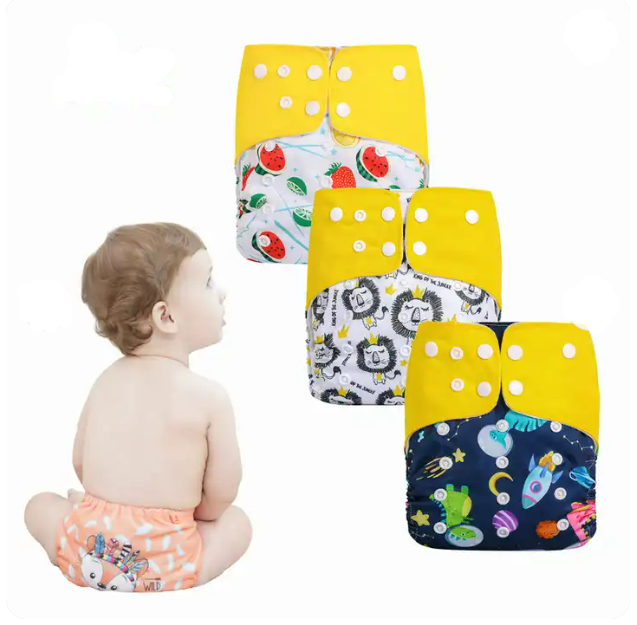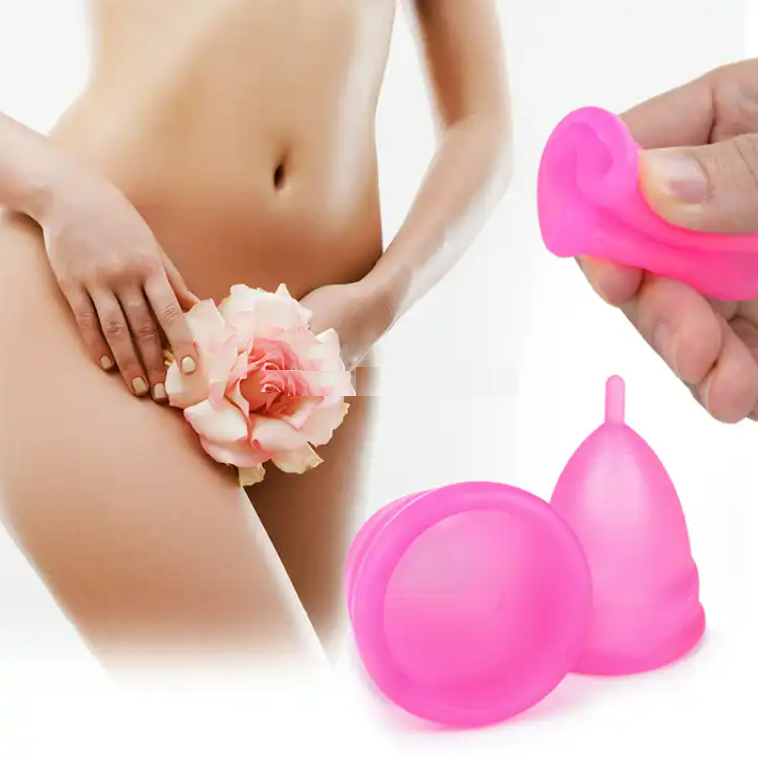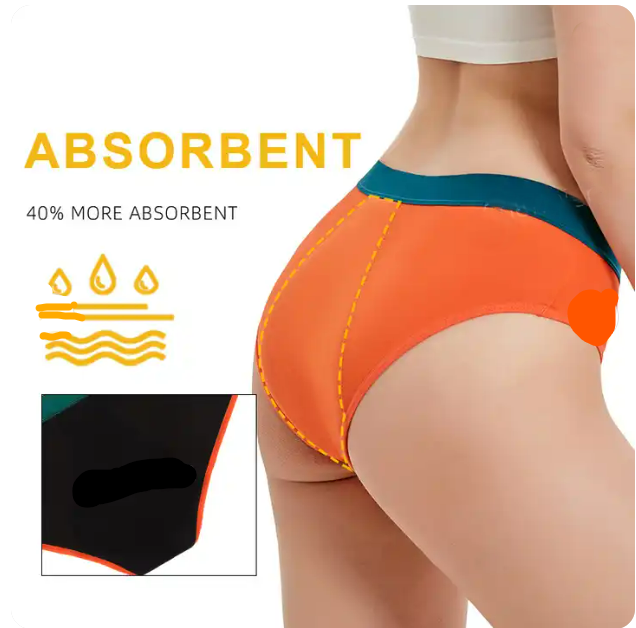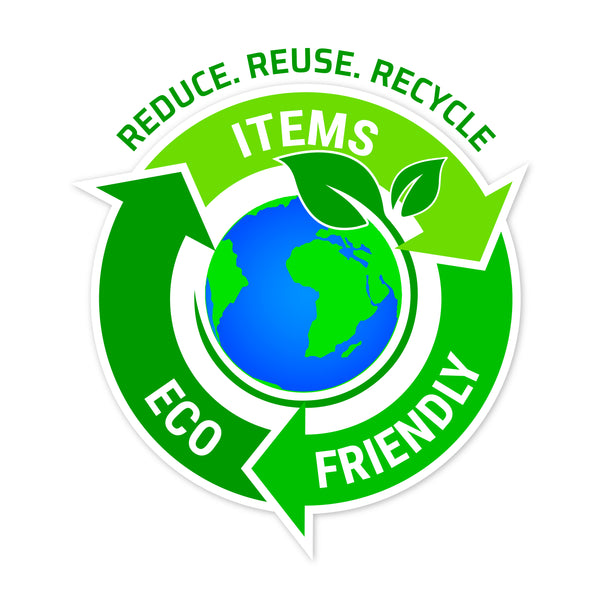FAQs
Cloth Diapering FAQs
New cloth diapering parents often have various questions and concerns as they embark on their cloth diapering journey. New cloth diapering parents should never hesitate to seek advice, guidance, and support from experienced cloth diaper users, parenting forums, and online resources to address their specific concerns and needs. Here are some common questions that new cloth diapering parents frequently ask:

Washable Cloth Baby Diapers
Our cloth diapers are cost effective, reusable, and reduce millions of disposable diapers that end up in landfills everyday. Eliminate the diaper waste's link to drug abuse.

Menstrual Cups
Modern alternative to traditional feminine hygiene products. Reduced Risk of Toxic Shock Syndrome. Create a secure seal, preventing leaks and odor. Free from harmful chemicals, fragrances, and additives

Period Panties
An eco-friendly option for managing menstruation and bladder leaks. Can be washed and reused, reducing the environmental impact and saving you money. No more pads or tampax tampon purchases.
General Cloth Diaper Questions
Do Reusable Cloth Diapers Really Save You Money?
Reusable cloth diapers can indeed save you money compared to disposable diapers in the long run. Here's how the cost savings work:
Initial Investment: It's true that cloth diapers have a higher upfront cost compared to disposable diapers. You'll need to purchase the cloth diapers themselves, along with any necessary accessories such as inserts, liners, and covers. This initial investment can vary depending on the type and brand of cloth diapers you choose. However, this initial cost is a one-time expense.
Long-Term Savings: The significant savings come over time. Disposable diapers are an ongoing, consumable expense that you'll need to purchase regularly until your child is potty trained. Cloth diapers, on the other hand, can be used repeatedly, and many parents use the same set of cloth diapers for multiple children. They have a longer lifespan and can potentially last for several years.
Additional Cost Benefits:
- Reduced Landfill Waste: By using cloth diapers, you reduce the number of disposable diapers going to landfills, which is not only environmentally friendly but also saves your community money in waste management costs.
- Less Frequent Purchases: With cloth diapers, you don't need to make frequent trips to the store to buy disposable diapers. This can save you money on transportation and reduce your overall consumption.
- Resale Value: High-quality cloth diapers retain their resale value, and you can recoup some of your initial investment by selling them to other parents once you're finished using them.
- Possible Use for Multiple Children: If you have more than one child, you can continue to use your cloth diapers for subsequent children, further maximizing your savings.
- Lower Overall Diapering Costs: When you factor in the cost of laundering cloth diapers, which includes detergent and energy expenses, it is still generally less expensive than the cumulative cost of disposable diapers over the same period.
It's essential to remember that the actual savings will depend on various factors, including the specific type and brand of cloth diapers you choose, your laundering habits, and the duration of time your child uses diapers. While the initial investment in cloth diapers may seem high, they often prove to be a cost-effective and environmentally responsible choice over the long term.
Why should one choose cloth diapers over disposables?
Choosing cloth diapers over disposable diapers is a decision that many parents make for various reasons. Here are some key advantages of cloth diapers:
1. Environmentally Friendly:
- Cloth diapers are reusable, reducing the number of diapers that end up in landfills. It's estimated that disposable diapers can take hundreds of years to decompose.
- Cloth diapers use fewer resources in production and are often made from sustainable materials like organic cotton or bamboo.
2. Cost-Effective:
- While the upfront cost of cloth diapers may be higher, they can save you a significant amount of money in the long run. Reusable diapers can be used for multiple children and may even be resold or passed down.
3. Healthier for Babies:
- Cloth diapers are often made from natural, breathable materials that are gentler on a baby's sensitive skin. This can help reduce the risk of diaper rash and skin irritations.
- Cloth diapers don't contain the chemicals, fragrances, or superabsorbent gels found in some disposable diapers, which can be a concern for some parents.
4. Customizable Absorbency:
- Cloth diapers allow you to adjust the level of absorbency, which can be particularly useful for babies with heavy or light wetting patterns.
- You can choose different types of inserts or boosters to meet your baby's specific needs.
5. Cute Designs:
- Many parents enjoy the variety of adorable and stylish designs available in cloth diapers. They can be a fun and fashionable choice for your baby.
6. Fewer Leaks:
- Some parents find that cloth diapers are less prone to leaks when compared to disposable diapers. Properly fitted cloth diapers with good absorbency can provide effective leak protection.
7. Potty Training Benefits:
- Some parents suggest that children who wear cloth diapers may potty train earlier because they can feel the wetness more immediately, helping them associate the sensation with the need to use the toilet.
8. Reduces Dependency on Disposable Products:
- Using cloth diapers aligns with a more sustainable and eco-conscious lifestyle. It reduces the dependence on single-use disposable products.
It's important to note that the choice between cloth and disposable diapers ultimately depends on individual preferences, circumstances and awareness of the impact of climate change. Some parents may choose to use a combination of both, depending on the situation. While cloth diapers offer many advantages, they do require regular washing, which can be a consideration for some families. Ultimately, the choice should be based on what works best for your family and aligns with your values and lifestyle.
How many cloth diapers should I buy?
Our
cloth diaper covers are designed to allow parents to use it multiple times during diaper changes. Only the soiled or wet insert is replaced with a clean one.
Instead of buying more diapers, you save money and reduce your laundry by buying more inserts. You can interchange any diaper with any insert we sell.
Let’s assume you prefer to do a laundry load every 2-3 days. A newborn is expected to go through an average of 10 diaper changes a day. Our research shows this is the maximum number of times you will change your child, hence this is
the worst case scenario. As your child gets older, fewer diaper changes are required.
You can reuse the diaper cover at least twice before putting it for a wash. So, this means each day you would need 6 diaper covers with 10 pairs of inserts. We
have conveniently set up a Day Pack for you which has enough diapers, extra inserts + accessories for 1 full day of cloth diapering needs.
After 2 days, you’ll have 12 soiled diaper covers and 20 soiled insert sets. End of 2 days, you would have 2 dirty Day Packs.
While you are laundering the soiled diapers at the end of the 2nd day, you’ll still have 6 clean diaper covers and 10 sets of fresh inserts or 1 full day pack. For three days you would need 18 diapers (each diaper comes with a pair of charcoal inserts) and an additional 12 inserts, which is basically 3 Day Packs. You could get a few more diapers just to give you a little bit of cushion. For the fourth day, assuming you’ve washed and dried the diapers on the third night you’ll have your stash clean and ready for another round of use.
This 3 day pack can be used for your next child, sold as used reusable cloth diaper or given away to friends or family to
be reused years after you purchased them.
What can I do about a smelly diapers after they are washed?
This is not very pleasant but it can be avoided by making sure that the diapers are thoroughly cleaned and rinsed. Do not leave any urine or faecal residue in the diaper. Stink is something that happens IN a diaper but should not happen TO the diaper.
How do I prep my new diapers before use?
Every diaper and insert comes to you ready to be used with all the absorption you will ever need just waiting to soak away your baby’s wets (cue happy dance…)!
We do recommend giving the new diapers a quick wash at least once in warm or cold water to refreshens them up and get rid of any dust that may have accumulated from the warehouse. You will only need to use less than ½ the recommended amount of detergent for this short cycle/hand wash as the diapers are already clean, you are just freeing them of dust.
How do I wash my cloth diapers?
MACHINE WASH
1. Remove any solid “stuff” off the diapers and liners before you throw it in the washer.
2. Pre-wash the diapers (short cycle) in warm/cold water using the recommended brand and amount of detergent. Check here.
3. Heavy Duty (longest cycle) warm/cold wash with proper detergent amount
For those who prefer a more visual explanation, check out our video.
*When it comes to detergent, we realize not one size fits all. You may want to use Non-Bio washing powder to avoid allergies/sensitivities on your baby delicate skin. Make sure that whatever you choose to use is cloth diaper safe. We recommended detergents that are not harsh on the skin or harsh on the cloth diaper fabrics.
HANDWASHING
1) We suggest you clean remove the solids off the diapers first.
2) Keep a bucket with detergent and soak the diapers and inserts soon after they have been spoiled.
3) Lightly handwash the diaper to remove any signs of stains if possible and leave it to soak in the bucket over night or 2.
3) When you have enough to make a wash load, give the diapers and inserts a gently handwash.
4) Rinse thoroughly a few times to get rid of any residual detergent.
5) We do not recommend the use fabric softer on diapers or diaper inserts.
6) Hang out to dry and make sure they are completely dry before folding them away ready for next use.
Happy laundering!
How do I dry my cloth diapers the eco-friendly way?
Drying cloth diapers in an eco-friendly way is a great way to continue your sustainable diapering journey. Here are some tips to help you dry cloth diapers while minimizing your environmental impact:
- Line Drying: The most eco-friendly way to dry cloth diapers is by line drying. Hang your cloth diapers and inserts on a clothes line in the sun to naturally dry. The sun's UV rays can help sanitize and remove stains from the diapers. This method is also cost-effective since it doesn't require any electricity.
- Use a Drying Rack: If you don't have outdoor space for a clothesline, or if the weather isn't cooperating, use a drying rack indoors. Position it near a sunny window for faster drying.
- Dry Them Inside-Out: To protect the outer fabric and designs on your cloth diapers from fading due to the sun's UV rays, turn them inside-out before hanging them to dry. This helps maintain the appearance and longevity of the diapers.
- Air Dry Overnight: If time allows, air drying overnight can be an effective method. Hang the cloth diapers indoors before bedtime, and they should be dry by morning.
- Avoid Overdrying: When using a dryer, opt for the lowest heat setting or an "air dry" option if available. Overdrying cloth diapers can cause wear and tear, reducing their lifespan.
- Dry Inserts Separately: If your cloth diapers have separate inserts, you can dry them separately from the diaper covers. Inserts usually dry faster and can be taken out of the dryer earlier, reducing drying time.
- Use Wool Dryer Balls: If you choose to use a dryer, add wool dryer balls to your load. They can help reduce drying time by improving air circulation and can be a more eco-friendly alternative to dryer sheets.
- Energy-Efficient Dryer: If you're using a dryer, make sure it's an energy-efficient model. Newer dryers are often designed to use less energy and reduce drying time.
- Dry on Off-Peak Hours: If you have time-of-use electricity rates, try to run your dryer during off-peak hours when electricity is cheaper and less taxing on the grid.
- Regular Maintenance: Keep your dryer clean and well-maintained to ensure it operates efficiently and doesn't waste energy.
By following these eco-friendly drying practices, you can maintain the longevity of your cloth diapers, reduce energy consumption, and lower your overall environmental impact while enjoying the benefits of reusable diapering.
Cloth Diapering FAQs
New cloth diapering parents often have various questions and concerns as they embark on their cloth diapering journey. New cloth diapering parents should never hesitate to seek advice, guidance, and support from experienced cloth diaper users, parenting forums, and online resources to address their specific concerns and needs. Here are some common questions that new cloth diapering parents frequently ask:
What is the best approach for night time cloth diapering?
Nighttime cloth diapering can be a bit different from daytime diapering, as it requires additional absorbency to keep your baby comfortable and dry for an extended period. Here are some important things to know about nighttime cloth diapering:
- Select the Right Diaper: Choose a nighttime cloth diaper that offers enhanced absorbency. Options like fitted diapers, prefolds, or all-in-one diapers with additional inserts or boosters can work well for nighttime use.
- Extra Inserts or Boosters: To increase absorbency, add extra inserts or boosters to your cloth diaper. Consider materials like hemp or bamboo, which are known for their high absorbency.
- Proper Fit: Ensure that the diaper fits your baby well. A snug fit helps prevent leaks. Make sure the diaper is adjusted correctly around the legs and waist.
- Double Up if Necessary: For heavy wetters, you might need to double up on inserts. Layering two inserts or using a combination of different materials can provide the needed absorbency.
- Wool Covers: Wool diaper covers are a popular choice for nighttime use. They are highly breathable, wick moisture away, and can hold a surprising amount of liquid. Plus, wool naturally resists odors.
- Hybrid Systems: Some parents opt for hybrid diaper systems that combine the convenience of disposable inserts with reusable covers. This can be a good option for overnight use when you need extra absorbency.
- Nighttime Potty Breaks: If your child is older and potty training, consider waking them up for a quick trip to the toilet before you go to bed. This can help reduce the chances of nighttime accidents.
- Stay Dry Liners: Use stay-dry liners to keep your baby's skin dry. These liners wick moisture away from the skin, making the baby more comfortable during the night.
- Check for Comfort: Ensure your baby is comfortable and doesn't feel too hot or too cold. Dress them appropriately for the season and room temperature.
- Rash Prevention: Be diligent about diaper changes, even during the night if necessary, to prevent diaper rash. Apply a diaper-safe barrier cream or ointment as needed.
- Consider Wool Interlock Soakers: These are highly effective for nighttime use, as they are breathable, absorbent, and can be used multiple times before washing.
- Experiment: Finding the perfect nighttime diapering solution may take some trial and error. Be open to trying different combinations of diapers, inserts, and covers until you find what works best for your baby.
Remember that heavy wetting at night is normal for many babies, so don't be discouraged if you encounter some leaks initially. With the right combination of absorbent materials and proper fit, you can achieve successful nighttime cloth diapering.
